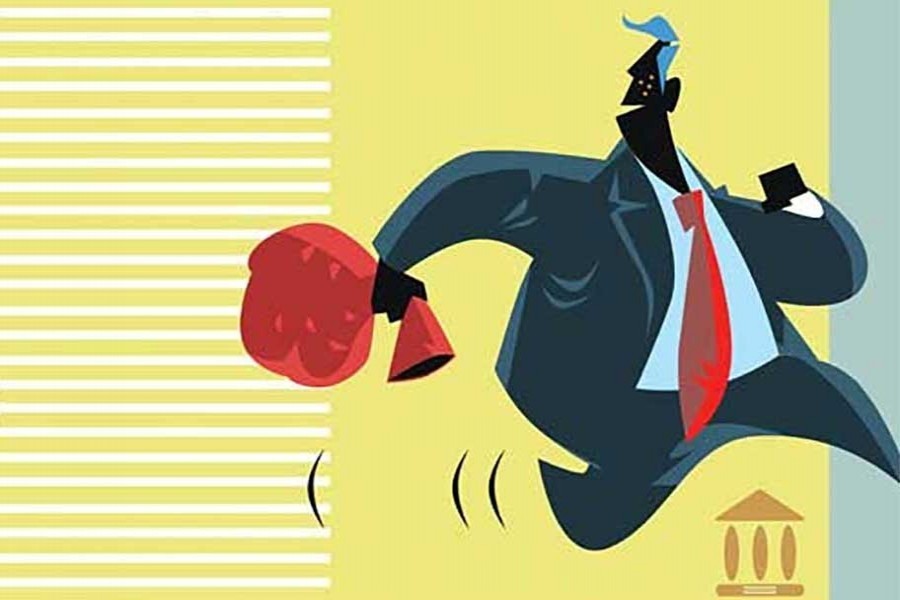The fact that the banking sector needs something effective in place to tide over the problems of huge classified loans and liquidity shortage is incontestable. But how far the special facility that the central bank offered last Thursday to bank loan defaulters and also 'good borrowers' would help banks in overcoming the crisis is not clear. The latest move being ambiguous, to some extent, may have only compounded the confusion of all concerned.
Economists are quite critical of the facility expressing their apprehension that it might worsen the unpalatable situation in the country's banking sector. Besides, their argument that the concessions that the central bank has extended lately to loan defaulters would encourage the good borrowers to withhold payments to banks and become defaulters cannot also be shrugged off. It is really hard to dismiss such a scenario. For, why would a good borrower pay 12 to 13 per cent interests on his/her loan when borrowers, stigmatized as defaulters, are required to pay a maximum interest rate of 9.0 per cent?
It is also difficult to say whether the banks are in agreement with the central bank as far as the latest facility offered to the defaulters goes. If they are, they must be expecting a turnaround in the situation now prevailing in the banking sector. But such an expectation is highly unrealistic given the experience the banks and the central bank had gained from almost an identical facility offered to large loan defaulters under the so-called large loan restructuring facility some years back. 0nly 11 large loan defaulters owing more than Tk.150 billion to banks were given conditional special rescheduling and time-bound repayment facility.
But, barring a couple of borrowers, all the beneficiaries of the restructuring scheme, as feared by many, defaulted on payment of their instalments. Actually, through the scheme, these delinquent borrowers managed some breathing space for themselves. However, the banks concerned have so far skipped actions against those defaulters in accordance with the provisions incorporated into the guideline for large-loan restructuring facility.
The latest facility, however, is meant for all loan defaulters. So, its implications would be far wider. It is likely that quite many loan defaulters, willful or otherwise, would seek to avail the facility and reschedule their loans for 10 years by making only 2.0 per cent down payment. Once a defaulter makes the down payment, he or she becomes a regular borrower. The rate of interest for his/her loan will not be more than 9.0 per cent. Besides, he/ she will be eligible for fresh loans. In the event of any major response from the loan defaulters to the latest facility, there could be greater fund flow in view of down payments. Besides, the banks' profit might also see notable rise because of the 'improvement' in quality of their loans.
Besides, the provision for refunding an amount equivalent to at least 10 per cent of the interest paid by 'good borrowers' every year as token of appreciation is a commendable one. But such borrowers deserve much more incentives.
However, the improvements that might emerge from the latest central bank facility offered to loan defaulters could prove temporary and superfluous. For, the rot in the banking sector, indeed, has gone very deep. The fresh leeway as provided under the latest BB facility is unlikely to leave any long-lasting effect on a very deplorable situation. What the banking sector does really need is a series of painful and hard reforms. Is the government or the central bank willing to put those in place?


